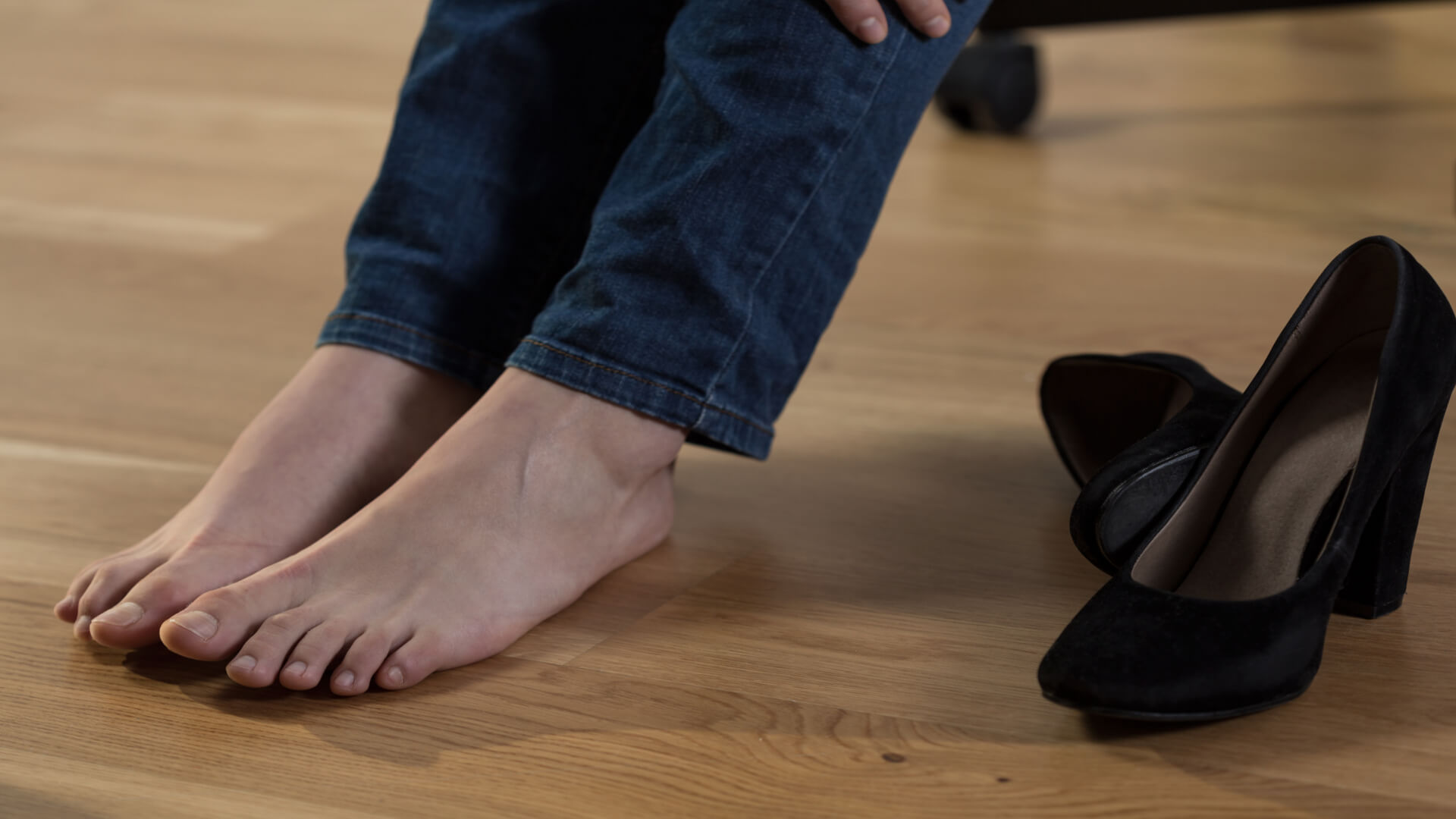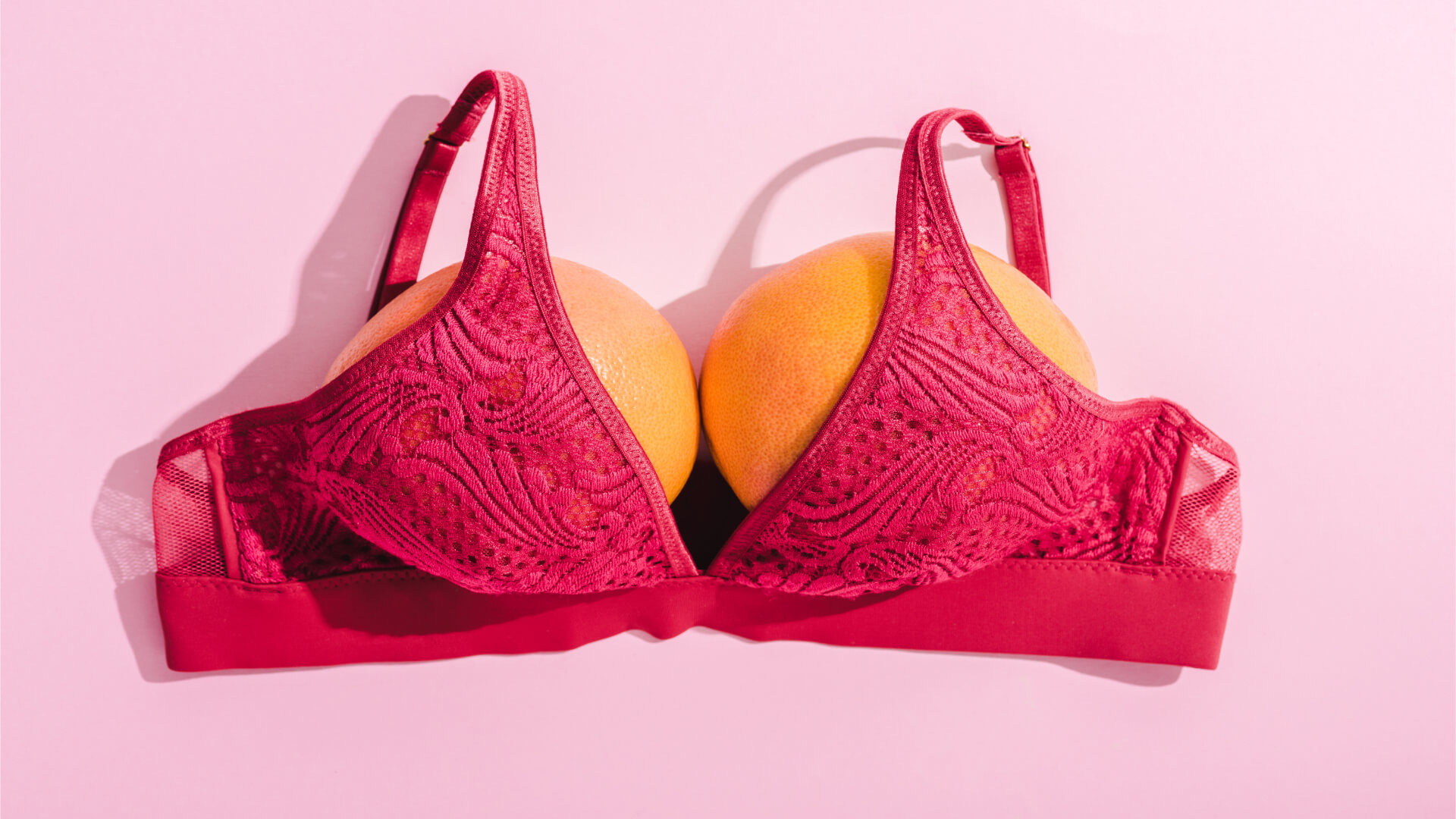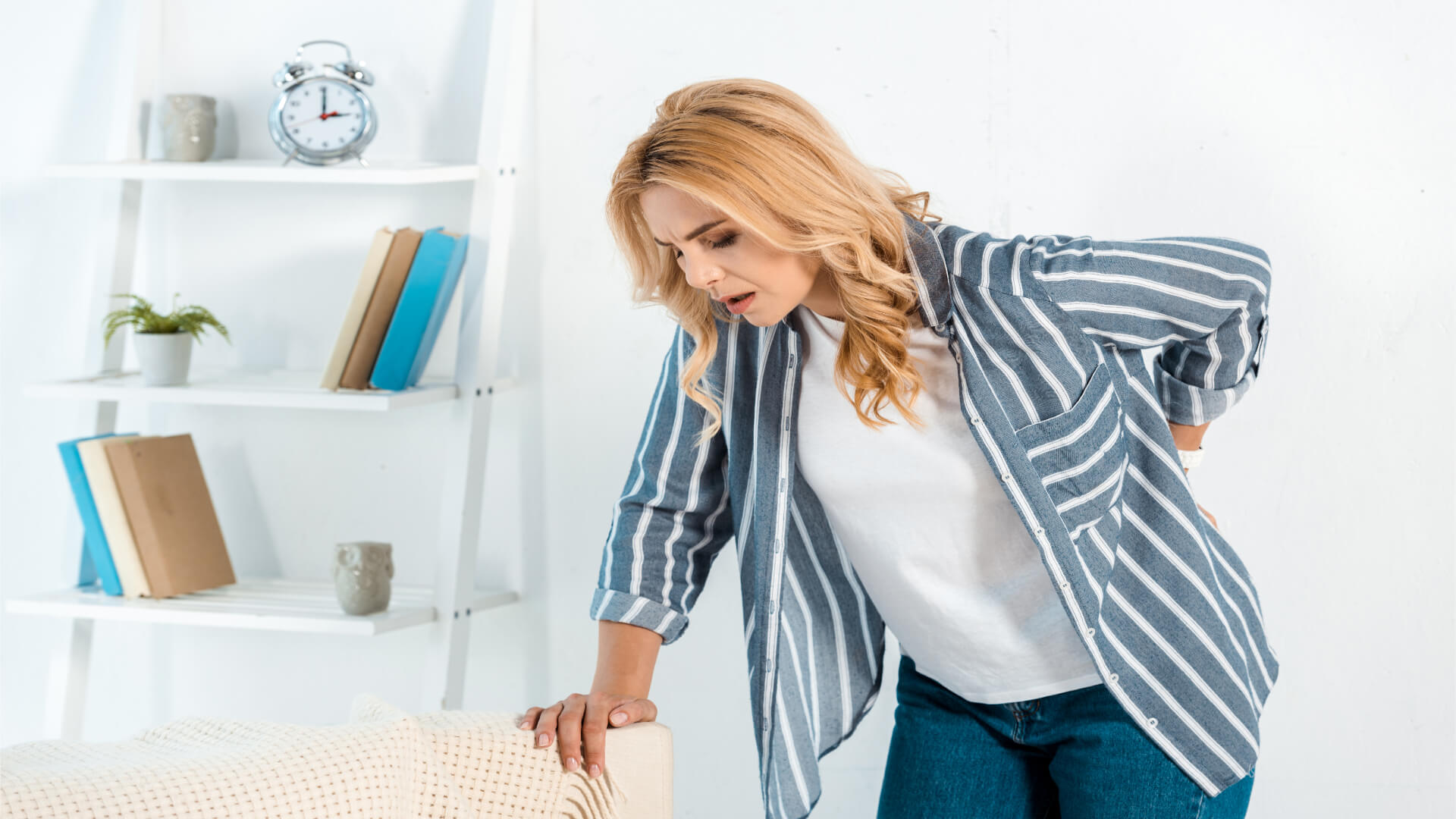Your body after baby

Sarah Johnson, MD

Many things are happening in your body right after you have a baby. During pregnancy, your body changed a lot. Read on for advice about what to expect from your postpartum body.
- Body Aches
- Vaginal Discharge
- Swollen Feet and Extremities,
- Enlarged Breasts
- Pronounced Stomach Pooch
- Stretch Marks
- Varicose Veins
- Back Pain
- Vaginal Pain and Tearing
- Urinary Incontinence
- Sore, Weak Arms
- Thicker Thighs and Legs
- Night Sweats
- Constipation
- Hair Loss
- Skin Discoloration
- Acne
- Change in Energy Levels
- Anxiety
- C-Section Scar
- FAQs
Navigating these changes can be emotionally taxing, but Mental Health AI is here to provide 24/7 support as you adjust to your new life. Read on for advice about what to expect from your postpartum body.
Body Aches
Pregnancy-related hormone production results in the relaxing of muscles and ligaments. This is essential for the fetus's appropriate growth, and the uterus becomes 25 times larger throughout the course of bearing a kid. The uterus starts to revert to its "pre-pregnancy" form following delivery. Additionally, a decrease in the size of the uterus is linked to abdominal discomfort during childbirth, which many laboring women report as pain in the uterus following childbirth.
better with Soula

Support for every woman:
✅ A Personalized Plan to reduce anxiety and overthinking
✅ 24/7 Emotional Support whenever you need it Cycle-Aligned Mental Health Tracking — monitor your mood and symptoms in sync with your period
✅ Real-Time Insights into your energy levels and emotional state
✅ Bite-Sized Exercises to help you return to a calm, balanced state — anytime, anywhere
But the pain should only last a few days, and over-the-counter or prescription medicines can be used to relieve it.

Vaginal Discharge
Vaginal Discharge are a sign of normal involution , which occurs after the birth of a child. It is important to take into account that violations of the volume, intensity and composition of these secretions may indicate the presence of subinvolution of the uterus.
Tampons and other internal products during menstruation can put you at risk of infection or cause pain or irritation, so use high-strength pads instead. During the first few days after giving birth, try to change the gasket every couple of hours.

Swollen Feet and Extremities,
Depending on the area to which they extend, is divided into 4 degrees:
- on the shins;
- on the legs and stomach;
- on legs, arms, face and abdomen;
- almost all over the body.
The swelling will go away on its own if you follow a diet, make dietary adjustments, stay away from hot and salty foods, and supplement for trace element deficiencies. Even in the early stages of the baby's life, it's crucial to allow yourself time to unwind and sleep.

Enlarged Breasts
When milk appears from the second to the sixth day after childbirth, normally the mammary glands fill up, become heavy and increase in size, but there is no pain. If milk production increases dramatically during these first days after delivery and more milk appears in the breast than the baby is able to suck, a painful enlargement of the mammary glands, known as breast swelling, is possible.
If you are breastfeeding or pumping milk, you can try a warm shower or compress, gentle massage and even pumping to help release milk. If not, use cold compresses to reduce pain and swelling, wear a supportive bra.

Pronounced Stomach Pooch
Many women anxiously compare their belly after childbirth, photos of themselves before conception and cannot believe that it is possible to return to their previous form at all. Of course, there are lucky women whose abdominal muscles and skin tighten very quickly. But, unfortunately, there are a minority of such people, and the vast majority will have to work hard to get rid of the belly after childbirth.

Stretch Marks
Stretch marks after childbirth occur in 80% of women. The hormone progesterone is largely to blame. During pregnancy, it plays an important role in protecting the fetus: its level increases, due to which smooth muscles relax, and the uterus does not contract, and miscarriage does not occur. But at the same time, progesterone weakens the connective tissue of the dermis. Thus, the skin does not have time to adapt to the growing body volume of the body volume, so the collagen and elastin fibers are torn, microtrauma occurs in the dermis and subcutaneous tissue, and stretch marks occur at the site of stretching.

Varicose Veins
Although varicose veins during pregnancy can also manifest in the vagina and buttocks, most often knobby, swollen venous areas form on the back of the calves, the inside of the legs, ankles or feet. Fortunately, they are usually benign and only cause brief problems that disappear three to twelve months after giving birth. But they can also be uncomfortable or cause irritation.

Back Pain
According to statistics, every second woman sooner or later has back pain after childbirth. They can have a different character and intensity, localized both in the spine and in the lower back. Back pain after childbirth can occur due to stretching and weakening of the abdominal girdle muscles during pregnancy, changes in the position of the spine, as well as due to the transfer of additional weight.

Vaginal Pain and Tearing
When the expected date of birth comes, expectant mothers have a lot of worries. Among the worries of wanting to meet a baby and the pain of contractions, postpartum pain is far from the most important place. However, after giving birth, it quickly becomes clear how much the body can hurt. One of those areas that can hurt for a long time is the perineum.
When a child exits through the birth canal, the skin stretches to the limit or even tears as a result of childbirth. And it is not surprising that most women suffer from postpartum pain in the perineum. But since this is not a condition that is often discussed with doctors during prenatal visits, many do not know what awaits them after childbirth or after the epidural anesthesia has stopped working. And when this pain appears, it can come as a shock to young mothers who were not aware of this part of the recovery process.

Urinary Incontinence
Part of what happens during this physical transformation is the restoration of the pelvic floor. It is his weakness that is responsible for postpartum urinary incontinence, which can be both drip-like during exercise, and so annoying and strong that it requires treatment by a doctor.
Postpartum incontinence is when young mothers cannot control their bladder. Because of this, urination accidents can happen at very inappropriate times. As a result, instead of running, jumping, performing certain yoga poses, sneezing calmly or laughing uncontrollably, young mothers have to be careful not to find themselves in a very awkward situation with wet underwear.
There are various sets of exercises that should be started immediately after giving birth and after a month you will feel the result. To better understand the mechanics of your recovery, read more about the role of the pelvic floor in your postpartum body and how to strengthen these vital muscles.

Sore, Weak Arms
Many expectant parents do not adhere to regular upper body workouts during pregnancy, which leads to weakness. In addition, during pregnancy, your body produces the hormone relaxin in large quantities, and this can weaken the joints afterwards. Sore wrists, aching shoulders and tired arms are all part of postpartum body care.

Thicker Thighs and Legs
During pregnancy, very often a woman's activity and level of nutrition decrease. These factors mean that you are gaining weight. Excess fat in adolescents is distributed in those places where women most often gain weight: on the buttocks, thighs and thighs. To lose weight gradually, mix of exercise and well-balanced nutrition.

Night Sweats
in the first days after childbirth, they are part of the natural process of hormonal restructuring of your body. You still have a lot of fluid left after pregnancy, and sweating is one way to get it out of your body. The sweat should dry out in a few days, but in the meantime, try to feel comfortable wearing breathable pajamas and using fewer blankets.

Constipation
After giving birth, many women experience constipation. Problems with defecation during breastfeeding occur for various reasons. Difficulties are often associated with changes in the hormonal background, weakening of the perineal muscles, decreased muscle tone of the peritoneum, lack of physical activity, as well as an unstable mental state after the birth of a child.
To keep things moving along:
- have at least eight glasses of water a day
- plenty of fiber-rich fruits, vegetables, and whole grains
- walking around

Hair Loss
The hormonal background also changes after the birth of children. The level of estrogen and progesterone decreases, in addition, blood volume and blood circulation rate decrease sharply — even the heartbeat slows down. And what happens to the hair in the postpartum period is called diffuse telogen alopecia — or baldness. And the reason for it is the disturbed balance of hair growth cycles. In everyday life, hair follicles function independently: while one hair follicle is growing, the second one "falls asleep", and the third one is preparing for loss.

Skin Discoloration
More than half suffer from melasma. Hormonal fluctuations can cause these dark spots to appear on the forehead, cheeks and upper lip, which often disappear after childbirth, but do not disappear completely.
Steroids, tretinoin (the primary component of Retin-A), and prescription bleaching treatments can be used singly or in combination.
Nevertheless, not all insurance companies will cover creams, and they can cause temporary redness, peeling, and dryness. You also can't use them if you're pregnant or breastfeeding.
However, creams can cause temporary redness, peeling, and dryness; you can't use them while you're nursing or pregnant; and not all insurance companies cover them

Acne
A woman is experiencing a hormonal boom during childbirth. There are many new processes going on in her body. After giving birth, the body tries to return to normal, but recovery does not always go smoothly. Acne can be one of the consequences of hormonal changes. Treating a rash during lactation is a difficult task that a dermatologist must solve. In no case should you select drugs yourself, since many medicinal substances are prohibited during breastfeeding.
You may be able to speed things along by using an over-the-counter acne cream with salicylic acid.
However talk to your doctor first if you're nursing.
The drying and lightning properties of lemon juice make it an effective spot treatment.

Change in Energy Levels
As for energy, some moms say they feel more energetic than ever before pregnancy. Your aerobic capacity can increase by up to 20% in the first six weeks after giving birth.
To raise your energy level will help:
- a workout routine.
- plenty of sleep.
- healthy diet.
- hydrating with plenty of water.
However, others say that heat exhaustion during childbirth, newborn care and overweight make their postpartum body feel sluggish and moody. Finding joy in simple routines, like choosing the best bath for your newborn, can turn a tiring chore into a peaceful bonding moment for both of you.

Anxiety
Sometimes a significant improvement can be achieved if a woman simply has the opportunity to talk to someone or at least briefly detach herself from the constant care of the child and get help from relatives in this. Increased maternal anxiety is not uncommon. Choice and doubt are the everyday companions of a modern mother: "Am I doing everything right? How do I swaddle him? Am I raising a child correctly?" Even small decisions can feel overwhelming; for instance, finding the best pacifiers for newborns can help soothe both your baby and your worries.
article_Postpartum Body_20.jpg
C-Section Scar
The main reason for the experiences of modern women after a cesarean section is the suture, since it is quite long and usually clearly visible on the skin. And often this is the only reason for concern, since in the vast majority of cases the operation is completed successfully for both mom and baby.
Today, seams are mainly applied with self-absorbable threads, which do not need to be specially removed. The doctor tries to make an incision so that the seam is directly under the abdomen, in the skin fold and visually is not so much visible. However, the prognosis depends not only on medical experience, but also on the maternity hospital itself.
FAQs
How long does postpartum body odor last?
The postpartum odor usually persists from several days to several weeks after delivery. It is caused by a natural detachment of the uterine mucosa, which may result in a metallic taste similar to blood. It can also be aggravated by lochiae, which are postpartum secretions that can have an unpleasant odor.
When does postpartum body odor go away?
Most postpartum body odors will begin to taper off around the 6-8 week mark. However, extra body odor due to breastfeeding may stick around until you’re done nursing.
How long does relaxin stay in body postpartum?
While there are differing opinions, relaxin could potentially stay in the body as long as 12 months postpartum. Therefore, you must continue to keep joint instability in mind when designing a client’s strength-training programming within her first year as a new mom.
How long do postpartum body aches last?
Postpartum contractions usually last for about seven to 10 days, and they’re sporadic, unlike labor contractions. Pain-wise, they’re usually strongest on the second and third days postpartum and can strike during breastfeeding or pumping.
After-birth pains can feel like labour pains or mild to moderate period pain. This pain comes from your uterus contracting towards its pre-pregnancy size. They are more common in women who have had other babies than in women who have just had their first baby.
How to dress my postpartum body?
After giving birth, it is even recommended for women to wear slimming underwear. Such swimming trunks not only tighten the sagging tummy, but also help to restore prenatal forms as soon as possible. This is a good way out for all women who have recently given birth, since sports, and indeed any physical activity at first is contraindicated.
For the recovery period after childbirth, it is necessary to purchase a couple of tunics and several dresses with an inflated waistline. Diverging under the breast, they mask the problem area. And remember, the longer the skirt of such a dress, the more elegant and slimmer you will seem.
Well-chosen trousers hide the belly even better than a dress or skirt. Trousers should be with a normal or high fit, with a side closure. Choose well-cut and simply tailored, with a minimum of design and preferably without pockets in the front. Slightly flared trousers will look great, but narrowing models should be avoided. A wide elastic waistband, which slightly squeezes the waist area, will perfectly solve the problem of the tummy. Wear this belt with a loose top or under a jacket.














